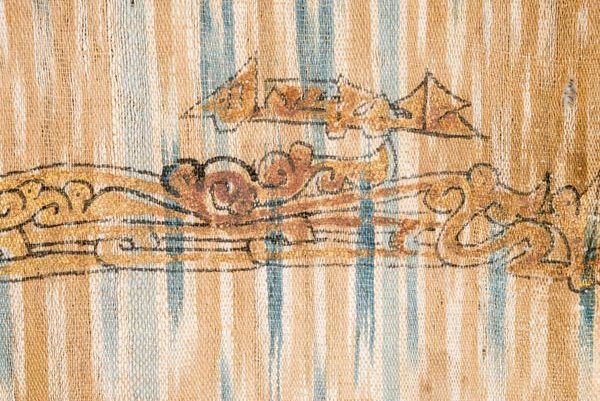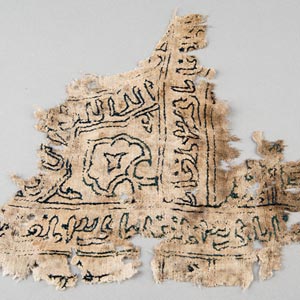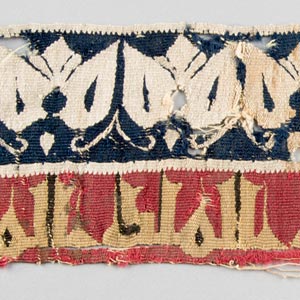Tiraz Textile
The Show

Tiraz textile Yemen or Egypt, 10th–12th centuries Cotton with resist-dyed warp (ikat), ink, and gold paint Kelsey Museum of Archaeology, 22621
This tiraz (inscribed) fragment stands out not only for its painted gold inscription but also for its complex patterning of color, which is achieved by resist-dyeing the warp threads prior to weaving the cloth. This technique, known as ikat, is characteristic of Central Asian textiles. This particular color palette and ikat pattern, however, were commonly used in tiraz textiles produced in medieval Yemen, after which imitations started to be produced in Egypt.
The ikat technique has the potential to yield highly polychromatic textiles. Each color requires a new dye bath and many hours of labor to untie and retie the warp threads between dye baths. As a consequence, the technique was rather costly, yielding expensive textile products targeted to elite wearers. Whether ikat dyed or plain, tiraz textiles performed several social functions beyond mere clothing. They were used to declare allegiance in the form of robes of honor and conferred blessings when used as burial shrouds.
In this example, a barely legible Arabic benedictory inscription is painted in gold and highlighted in black pigment. Above the line of foliated script appears the short laudatory expression "Dominion belongs to Him [God] " (al-mulk lahu).
Bibliography: Day 1937; Ekhtiar et al. 2011, 52, cat. no. 29; Contadini 1998, 61–62, pl. 15; Baker 1995, 53–61; Micklewright 1991; Sokoly 1997a; 1997b; Marzouk 1943; Ettinghausen 1974; Aanavi 1968; and Blair 1998, 164–169.
Return to the Show



